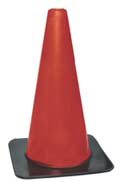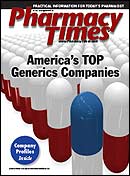Publication
Article
Generic Supplements
News Briefs
Generic Drug Prices Show Sharp Drop . . .
Findings of a recent study by the American Association of Retired Persons (AARP) Public Policy Institute reveal a big drop in prices for generic drugs most often used by older Americans.
Manufacturers' prices for 125 generic drugs widely used by this population dropped nearly 10% last year and by an average of 16.5% over the 5-year period, 2003-2007, according to the report. In contrast, manufacturers' prices of 169 brand name drugs have risen by >50% since 2002.
One reason for the price drop, according to AARP's David Gross, one of the study authors, is that when several manufacturers compete to produce a similar generic, "there's an incentive for them all to keep dropping the price to get their own brand onto pharmacy shelves."
AARP's RX Watchdog report, "Trends in Prices of Prescription Drugs Used by Medicare Beneficiaries," is based on actual drug use by 5.68 million older Americans enrolled in the Medicare Part D prescription drug program. For more information, go to www.aarp.org/research/health/drugs/rx_watchdog.html.
. . . And More Seniors Are Using Them
Results of a recent study looking at the impact of the Medicare Part D prescription drug program on both patients and pharmaceutical companies reveal a marked shift toward generics on the part of seniors who enter the so-called "coverage gap" and have to pay all of the out-of-pocket costs for a prescription.
The study by Wolters Kluwer Health shows a growing preference among seniors for generics over brands since the Part D program began in January 2006. Prior to 2006, the generic-to-brand ratio in the Part D population was even at 50% each. By the end of 2006, that split increased to 56% for generics versus 43% for brands. By 2007, the trend became even more pronounced, with 63% of all Medicare Part D prescriptions going to generics, versus 37% for brands. Among those in the coverage gap who discontinue their brands, only 6% returned to their branded medication after leaving the gap, the study also found.
For patients within the gap, drugs experienced extraordinary price disparity between brands and generics. In the lipid market alone, the study shows a $72 difference between the cost of a 30-day supply to the patient between a brand and a generic.
"Wolters Kluwer Health has been tracking Medicare Part D prescription data since the program's inception, and we are now seeing a more pronounced shift away from branded medications towards generics," said Bob Jansen, vice president of managed markets and brand analytics for the company.
For more information on this study, go to www.wkhealth.com.
Europe Looks to Remove Barriers to Generics
The European Generic Medicines Association (EGA) recently released a report shining the spotlight on a number of practices it believes are responsible for slowing down the process for bringing affordable generic medicines to market.

Reporting at EGA's annual conference, EGA President Eric Gorka reminded the 400 attendees of the key role generic medicines play in providing lower-cost medicines to millions of Europeans, thus helping to ensure the affordability and sustainability of Europe's public health care systems. "It is imperative to ensure that no hurdles exist to hinder the access of generic medicines to markets immediately upon patent expiry," he said.
The EGA's new report, "Patent-related Barriers to Market Entry for Generic Medicines in the European Union," details hurdles deriving from weaknesses in the European patent system and the surrounding legal and regulatory framework, including failings in the system for granting quality patents; patent "thickets" and follow-on patents; and patent litigation procedures. The report underscores the many ways that patents are being used today to prevent innovation and competition rather than to stimulate the creation of truly innovative products.
Incentive Program Aims to Boost Adherence
Independence Blue Cross (IBC) has announced a new member incentive program, Rx for Better Health, whichwill waive copays on 75 generic drugs identified as those most commonly used to treat chronic conditions such as:
- High blood pressure
- High cholesterol
- Diabetes
- Depression
- Acid reflux
- Heart failure
- Heart disease
The initiative, open to IBC and AmeriHealth subscribers in Pennsylvania, is scheduled to run from July 1 through December 31, 2008. It follows on last year's No Pay Copay program, which waived $50 million worth of copays for all generics.







